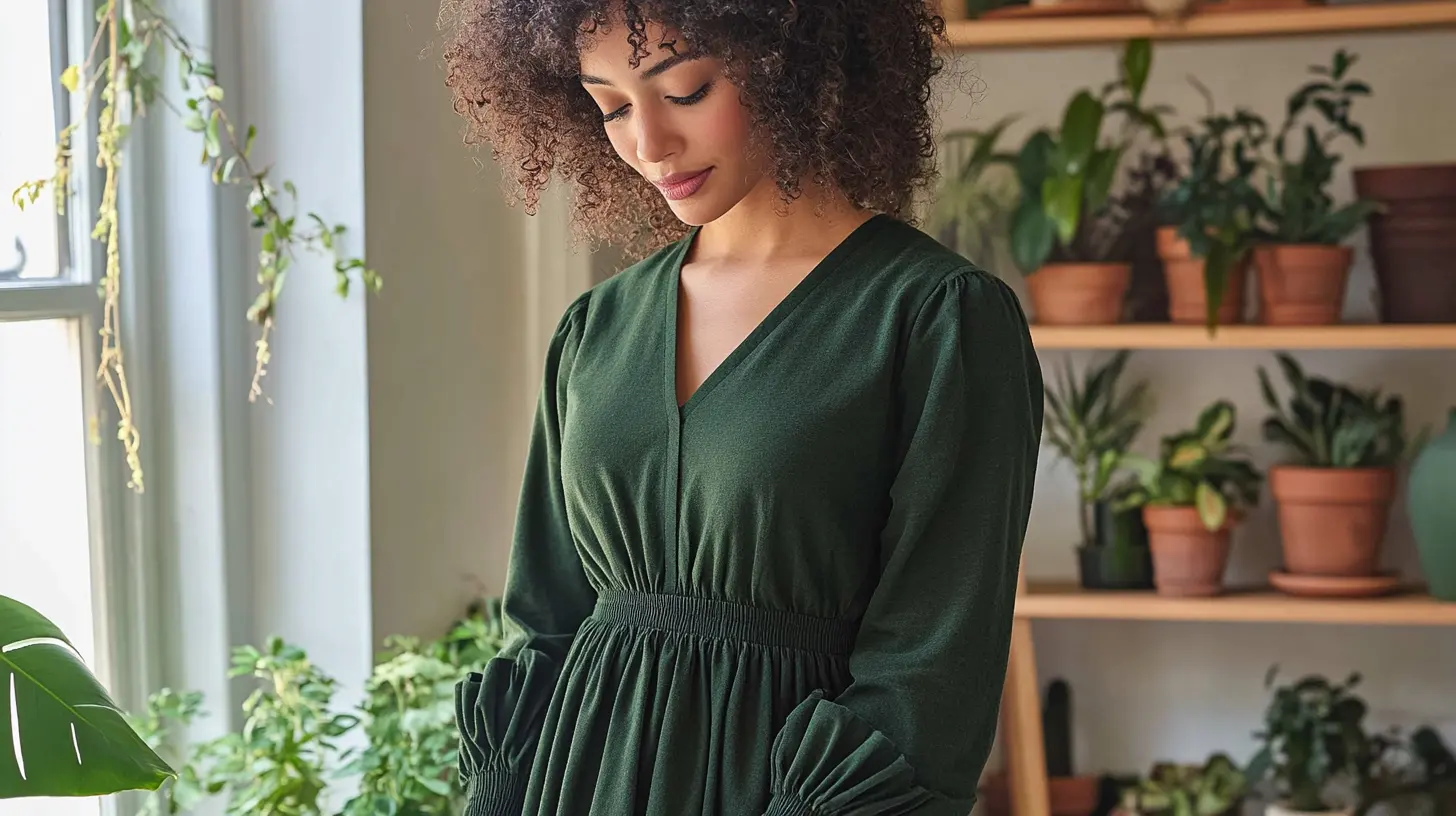With its distinctive ridged texture and rich history, corduroy fabric is more than just a textile. It embodies comfort, style, and durability. Corduroy has transcended generations and is often associated with casual elegance, finding its way into wardrobes and homes alike.
Corduroy offers endless possibilities. Whether you're looking to add a touch of sophistication to your outfit or seeking a cozy fabric for your next DIY project, corduroy has got you covered. Join us as we explore everything you need to know about corduroy!
Key Takeaways
- Corduroy is a durable fabric with a ribbed texture created by vertical rows called wales.
- It's typically made from cotton fabric or blends, offering breathability and warmth.
- The wale count varies from 8 to 23 per inch; fewer wales mean thicker ribs.
- Corduroy is versatile for clothing, upholstery, and accessories, providing both style and comfort.
Origin and History of Corduroy Fabric

Corduroy has an interesting history. Originating in 18th-century England, this durable fabric became a favorite among the working class in Manchester.
Initially, it evolved from the older Fustian fabric, which was first made from wool and later cotton. As production methods improved, corduroy gained popularity for its versatility and durability. By the 1700s, it was widely used in rural British clothing.
Despite a decline in the 19th century due to the rise of velvet, corduroy made a major comeback in the 1970s. Unique dyeing techniques of that era created a vintage look, cementing corduroy's place in contemporary fashion across the globe.
Production Process of Corduroy Fabric
Creating corduroy fabric starts with dyeing and spinning selected fibers onto spools. This sets the stage for its distinctive ribbed texture.
Next, during the warping stage, the warp yarns are measured and wound onto a loom, preparing them for weaving.
The threading process interlaces these warp and weft yarns, forming the characteristic raised lines or wales.
After weaving, the fabric undergoes cutting, washing, and brushing to achieve a smooth finish.
This meticulous process ensures the corduroy's unique appeal.
Characteristics of Corduroy Fabric
Corduroy fabric boasts unique characteristics that set it apart in both texture and versatility. The most distinctive feature is its ribbed texture, formed by vertical rows called wales. The wale count, typically ranging from 1.5 to 21 wales per inch, influences the fabric's feel. Lower counts mean thicker ribs, while higher counts result in finer, more delicate textures.
Corduroy is known for its durability. This makes it ideal for various applications, from cozy clothing to robust upholstery. Available in different types, corduroy's versatility ensures it meets diverse needs. It can consistently offer warmth, breathability, and a timeless appeal.
Different Types of Corduroy Fabric

When exploring the common types of corduroy, you'll find various options to suit different needs.
1. Standard Corduroy
Standard corduroy has a medium ribbed pattern and 11 weaves per inch. It's perfect for crafting durable yet stylish garments. This corduroy balances texture and softness, making it ideal for various clothing applications.
2. Elephant Corduroy
Elephant corduroy has wider ribs ranging from 1.5 to 6 wales per inch. It offers a plush texture that is perfect for creating durable and stylish garments.
Due to its robust nature, this type of corduroy is ideal for upholstery. It ensures your furniture looks great and lasts long. The number of wales gives it an eye-catching, unique, retro aesthetic.
3. Pinwale Corduroy
While elephant corduroy impresses with its bold, wide ribs, pinwale corduroy captivates with its fine, closely spaced wales, typically ranging from 16 to 23 per inch.
This type of fabric is perfect for garments like shirts and dresses. It offers a soft texture that enhances comfort and sophistication. The fine wales make the fabric less bulky, allowing for a tailored fit for casual and formal occasions.
4. Pigment-dyed Corduroy
Pigment-dyed corduroy stands out with its unique faded, vintage look. It's perfect for adding a touch of casual style to your wardrobe.
This type of corduroy undergoes a special dyeing process that infuses the fabric with a rich, mottled finish, enhancing its vintage appearance.
Its color variation and depth add character, and the fabric's resilience ensures your favorite pieces last.
5. Spandex Corduroy
Spandex corduroy combines the traditional ribbed texture with the enhanced elasticity of spandex. This combination makes it ideal for activewear and fitted clothing.
Spandex corduroy retains the classic look but with added softness, making it more comfortable to wear throughout the day. This blend not only improves elasticity but also enhances the fabric's durability, reducing wrinkles and maintenance efforts.
6. Bedford Cord
Discover the unique appeal of Bedford cord, a type of corduroy distinguished by its thick, pronounced wales.
This fabric's ribbed texture and 3 to 5 wales per inch make it ideal for durable workwear. Bedford cord is commonly used in trousers and jackets, offering both durability and a polished look.
Embrace the durability and style of Bedford cord in your wardrobe.
Common Uses of Corduroy Fabric

Thanks to its durability and warmth, corduroy fabric is a popular choice for clothing like pants, jackets, and skirts, especially in cooler climates. Due to its durable nature, it's also a popular choice for children's clothing.
Additionally, corduroy shines in upholstery. It offers a sturdy and easy-to-clean option for furniture like sofas and chairs.
Beyond clothing and furniture, people frequently use corduroy in accessories such as bags, hats, and shoes. It adds a touch of texture and retro style to any ensemble.
Advantages and Disadvantages of Corduroy Fabric
Corduroy fabric offers numerous benefits. One of its main advantages is its durable nature. It ensures your garments last longer. The unique ribbed texture adds a stylish touch and comes in various wale sizes and colors, giving you design versatility.
Additionally, corduroy is easy to care for. You can machine wash it on a gentle cycle, and it doesn't wrinkle easily.
However, there are disadvantages. The fabric's texture tends to attract lint and pet hair, requiring more frequent cleaning. Also, the heavier weight of some types can restrict movement and make it less suitable for active wear or warmer temperatures.
Care and Maintenance of Corduroy Fabric

Proper care and maintenance are key to ensuring your corduroy retains its durability and stylish appearance.
- Wash corduroy fabric on a gentle cycle with cold water to maintain its texture. Avoid bleach to protect the color.
- After washing, tumble dry on low heat or air dry. To help remove creases, limit tumble drying to about 10 minutes.
- When you iron, use a low setting and turn the fabric inside out to prevent shine.
- Store your corduroy in a cool, dry place to avoid mildew and keep its structure intact.
- Regularly brush the fabric to keep it looking fresh.
- Always check the care labels for specific cleaning instructions, as some items may need dry cleaning.
Sustainable Aspects of Corduroy Fabric
Choosing corduroy made from organic cotton helps minimize pesticide use and water consumption, making it a more eco-friendly option.
Additionally, the emergence of recycled corduroy fabrics promotes the reuse of existing materials, reducing waste in the fashion industry.
Corduroy's durable nature extends the lifespan of your clothing, cutting down on the need for frequent replacements.
Corduroy is biodegradable at the end of its lifecycle. It breaks down naturally, lessening the environmental impact compared to synthetic fabrics.
Conclusion: What Is Corduroy Fabric?
In conclusion, corduroy fabric offers you a blend of durability, comfort, and versatility.
With its unique ribbed texture and various styles, you can find the perfect type for your needs, whether for clothing or upholstery.
While it has pros and cons, proper care and maintenance will keep your corduroy pristine.
And if sustainability matters to you, you'll be pleased to know that eco-friendly options are available.
Learn more fabric knowledge on the Longan Craft Blog, and dive into the fabric world with Longancraft!
FAQs
What Kind of Material Is Corduroy?
Corduroy is a fabric made primarily from cotton, featuring vertical ribs called wales. It's available in various types, like jumbo and pin cord. Corduroy is durable and versatile and is sometimes blended with materials like polyester for added strength.
Is Corduroy a Winter Fabric?
Yes, corduroy is a winter fabric. It's thick and ribbed, providing excellent warmth and insulation. You can wear it for various winter activities, and it's perfect for jackets, pants, and skirts to stay cozy.
Is Corduroy Good Quality?
Yes, corduroy is good quality. It's durable, versatile, and comfortable. With its unique ribbed texture and breathability, corduroy stands out in both fashion and practical applications, making it a reliable choice for everyday use.
Is Corduroy Always Cotton?
Corduroy isn't always cotton. It can be blended with polyester, elastane, or even wool for different textures and properties. These blends enhance durability, stretch, and comfort, offering more options for various uses.


0 comments